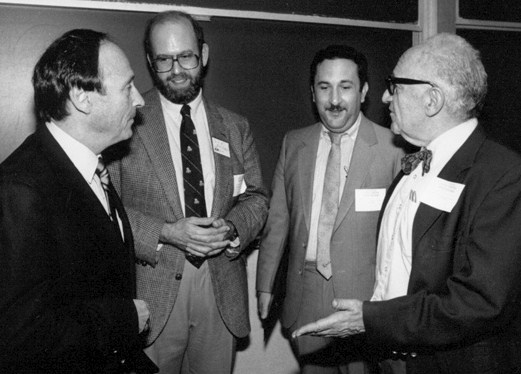I wished Herbert Aptheker a happy 60th in person in 1975 and called Isaac Asimov on his five years later. I had just finished reading the latter’s memoir, his number was listed, and he answered immediately and amiably. I also participated in Murray Rothbard’s surprise celebration (same milestone) in 1986.
For mine in 2013, my wife and I went to Nam Wah Tea Parlor on Chinatown’s Doyers Street on the recommendation of Mark Margolis, the recently deceased actor with whom only the week before we had shared a common table (i.e., with “strangers”) at Joe’s Shanghai (around the corner on Pell Street).
For me, reaching 70 has not been like hitting 60. I’m neither living nor working where I was then; I had no clue of how (if ever) those transitions would go. Between then and now I got a few things published, books that had been pipedreams and might have remained so. Herbert lived to 87; Isaac, 71; Murray never made it to 69. Each man finished many projects, but also left some unfinished. I’m thinking especially of the “missing” (that is, unwritten) third volume of Murray’s history of economic thought.
I remember talking about Asimov’s books to a youngster working in the mailroom of Sargent Shriver’s law firm. He was stunned to learn that Asimov was a person: the spines of hundreds of books in his school’s library bearing Asimov’s name suggested the name of a publishing house.
Aptheker is and will be (except perhaps for his progeny and the dwindling number of those who knew him) a subject of specialized interest, a function of a broader interest in Africana studies and Communism.

Of these three, only the writings of the polymath economist, historian, and political philosopher Rothbard have convinced thousands of scholars to work in his intellectual tradition (natural rights, praxeology, and antistate, antiwar revisionism). At a memorial in ’86, Lew Rockwell told me that “he [Murray] needs his [Robert] Skidelsky,” referring to Keynes’s biographer. Twenty years later, Murray’s mentor and former Gestapo target Ludwig von Mises (1881-1973) got his Hülsmann. Murray’s oeuvre will need a team of Hülsmanns (as I learned the hard way). Continue reading “Milestones and Memory’s Millstones”



















 “And the Word became (ἐγένετο, egeneto) flesh (σάρξ, sarx) and dwelt (ἐσκήνωσεν, eskēnōsēn) among us . . . .” John 1:14
“And the Word became (ἐγένετο, egeneto) flesh (σάρξ, sarx) and dwelt (ἐσκήνωσεν, eskēnōsēn) among us . . . .” John 1:14 The following of review of John L. Williams, CLR James: A Life Beyond the Boundaries (Constable, 2022) was
The following of review of John L. Williams, CLR James: A Life Beyond the Boundaries (Constable, 2022) was 
 ; the play
; the play 
 are the verbally inspired Word of God, that they are without error in their original writings, that they are of supreme and final authority in regard to all matters of faith. By “verbal inspiration” I mean that supernatural work of the Holy Spirit by which, without setting aside the personalities and literary abilities of the human instrument, He constituted the words of the Bible in its entirety as His written word to you and to me. I believe that every word of Scripture was produced under the guidance of God’s Spirit, that “holy men of God spake as they were moved by the Holy Spirit” (2 Peter 1:21). This conviction has stood the test of more than a half century of personal Bible research and study.
are the verbally inspired Word of God, that they are without error in their original writings, that they are of supreme and final authority in regard to all matters of faith. By “verbal inspiration” I mean that supernatural work of the Holy Spirit by which, without setting aside the personalities and literary abilities of the human instrument, He constituted the words of the Bible in its entirety as His written word to you and to me. I believe that every word of Scripture was produced under the guidance of God’s Spirit, that “holy men of God spake as they were moved by the Holy Spirit” (2 Peter 1:21). This conviction has stood the test of more than a half century of personal Bible research and study. Bingeing these days on YouTube lectures by Stalin biographer
Bingeing these days on YouTube lectures by Stalin biographer